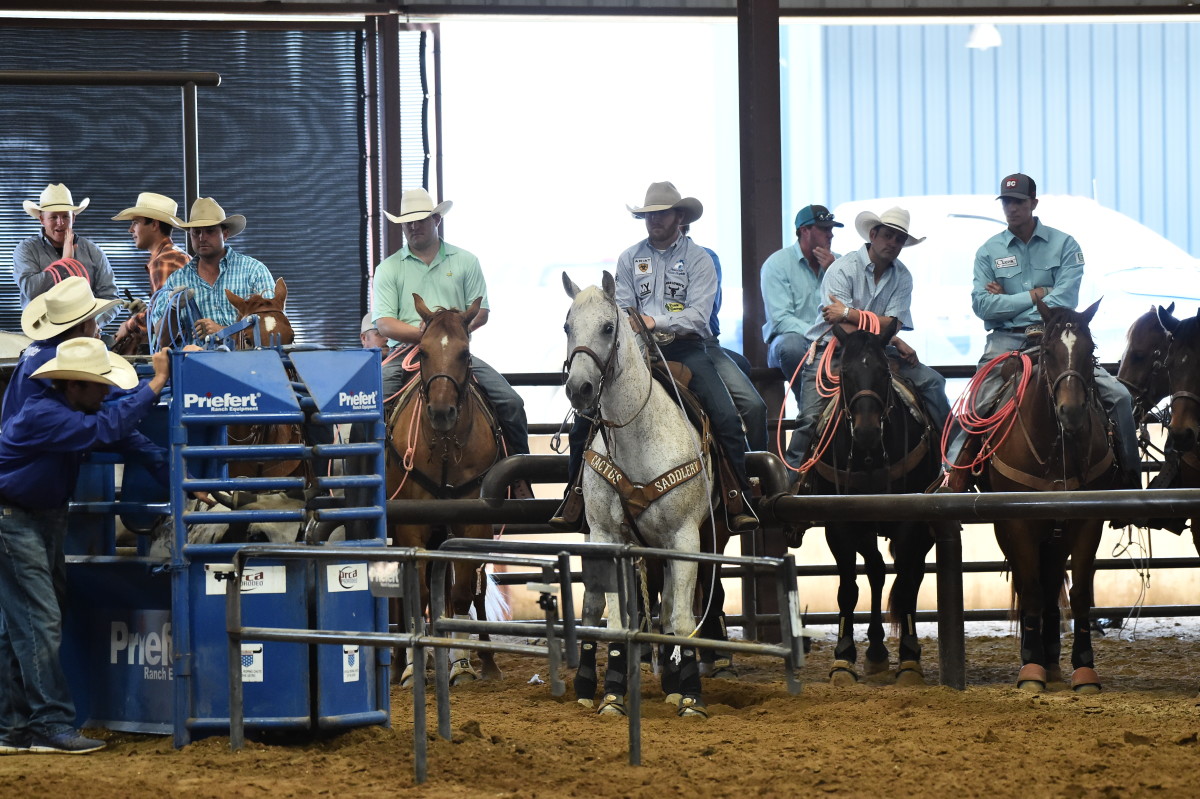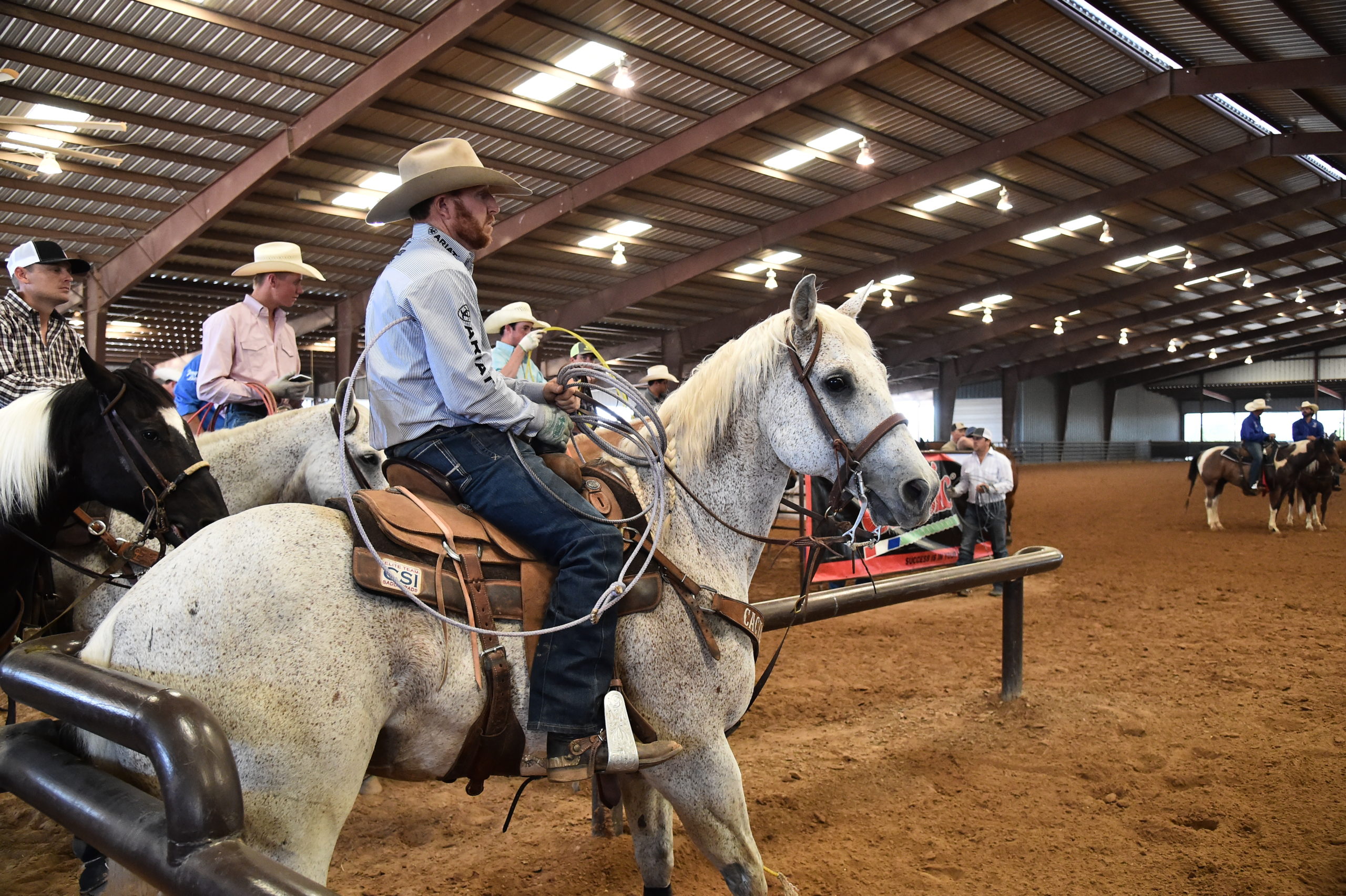Even as pale-skinned as I am, I went to a water park once when we were at a rodeo in Kissimmee, Florida. (Stick with me here–you’ll understand how we relate this to scoring soon.) They have this deal where you go get in a tube and they drop it straight out from underneath you. It’s really tall and scary, and I didn’t know what I was getting into. I wanted to get back down the stairs, but there were little girls in line, and I didn’t want to walk down past these little girls to get down. So I get in the tube, the guy running the ride says to cross your arms and drop your legs, and when I do that, he’s going to drop the bottom out from under me. So, I cross my arms, cross my legs, and the bottom immediately drops out from under me.
A few months later, we go to Boise, Idaho, and I go to another water park. There’s this ride again, and my heart is beating and everyone else is doing it. This lady tells me to cross my arms and feet, but this time when I do that, nothing happens, and nothing happens and this lady on this computer’s voice starts counting down—three, two, one—and I want this ride to go and be over with. You have to understand how bad I’m hating this ride. So now, by the time she says launch off, my heart is ready to explode out of my chest, and finally, the bottom drops out from under me and the ride is over before I know it.
That has nothing to do with scoring, and everything to do with scoring. I’ve ridden a lot of different horses, and I’ve ridden a lot of different horses in a lot of different boxes. And because of that, I divide head horses into two categories when it comes to their temperament in the box—some that can wait for the “launch off” and some that can’t. I don’t have a preference on which type of horse I ride, but most good horses fit somewhere on the spectrum between those two generalities.
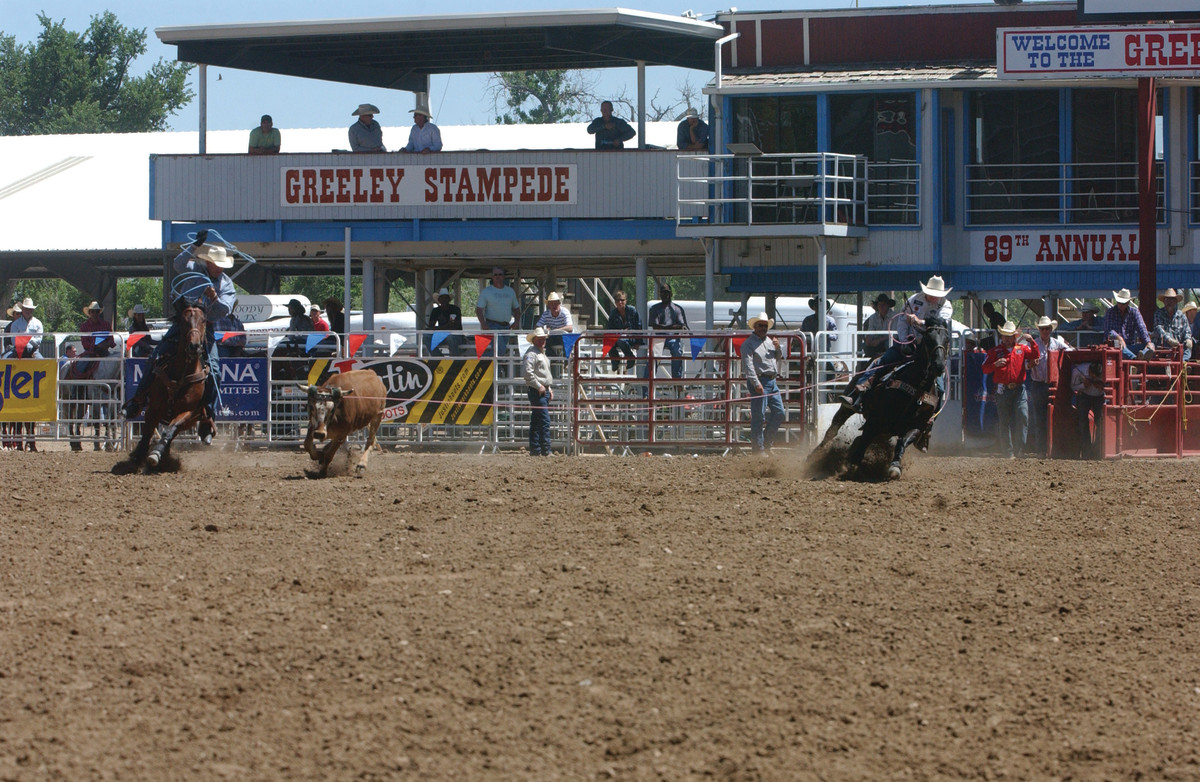
Type 1: Taking a Holt
The Perks:
These head horses score flat-footed, looking down the rein at the steer in the chute, just waiting patiently for their header to say launch off like that lady at the water park. When a header pulls on that horse’s bridle reins, he stays. When the header loosens the reins, he goes. Some horses will score like that forever, especially when you just need to see a little bit, and that fits with their natural timing. Those horses are ideal, because we all have a tendency to pull when we nod, especially when the steer doesn’t go anywhere. They stand in the corner when you pull, and they go when you drop your hand, and they can do that every day for the rest of their lives.
Example:
My black horse, Stranger, who I rode from 2006 to 2011, really fit that mold. He’s probably the only one of my horses that was ever this type of horse. He locked onto the cow the second I rode in, and all I had to wait on was the steer to get right. My job was to just go rope, which made heading pretty easy.
Challenge:
If you’re wanting to pull on your horse or hold them, you’ll be more successful at shorter scores. The trouble I’ve had is trying to make every horse work like this. I can teach a horse to let me pull on them, but then get to the roping and they’ll either let you score or they won’t. But what do you do if you get there and they won’t?
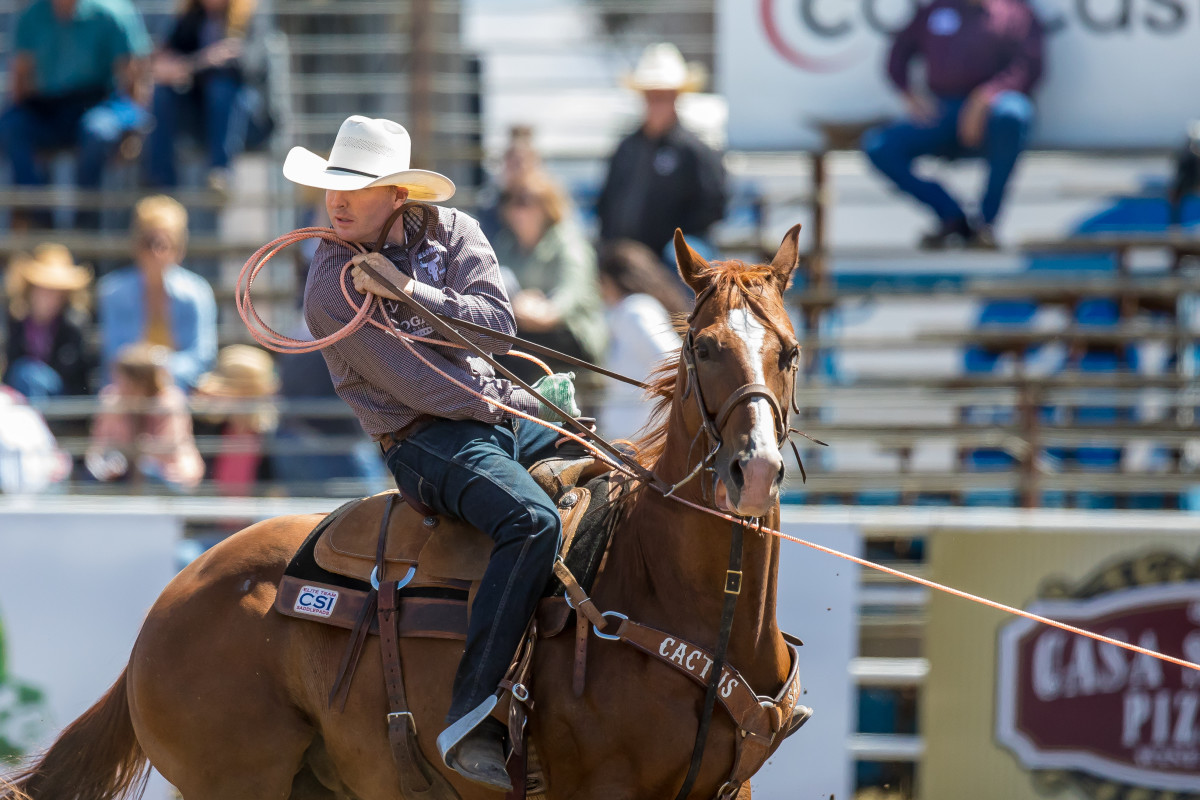
Type 2: On the Muscle
The Perks:
Some horses take forever to get right, and then score every time. There are horses I’ve had that won’t look at the cow, have their head to the right, and you trick-score them. You figure out how to pull on him, how much you need to turn his head. But just because he might not be easy to get in the box and easy to look toward the cow—that doesn’t mean you still can’t score him. Trick-scoring has helped me get my horses to last longer. If you don’t want to buy horse after horse, figuring out your horse will help you get along with the one you have. It might take scoring on a loose rein or trick-scoring him, but in the end, if you can figure out your timing, these types of horse can be extremely successful.
Example:
Clint (Madison Oak) is the best horse I’ve got right now. But it took until he was 10 to really figure out how to score on him, which I’ll explain in the next few pages.
Challenge:
These kinds of horses aren’t for everyone. They require you to control your body and definitely your nerves and attitude. When you’re mad on one of these horses, they feel it. They’re not for everybody, and they’re not the kind of horse everyone thinks of when they think of one that scores good. They are often on the muscle and require a more nuanced timing.
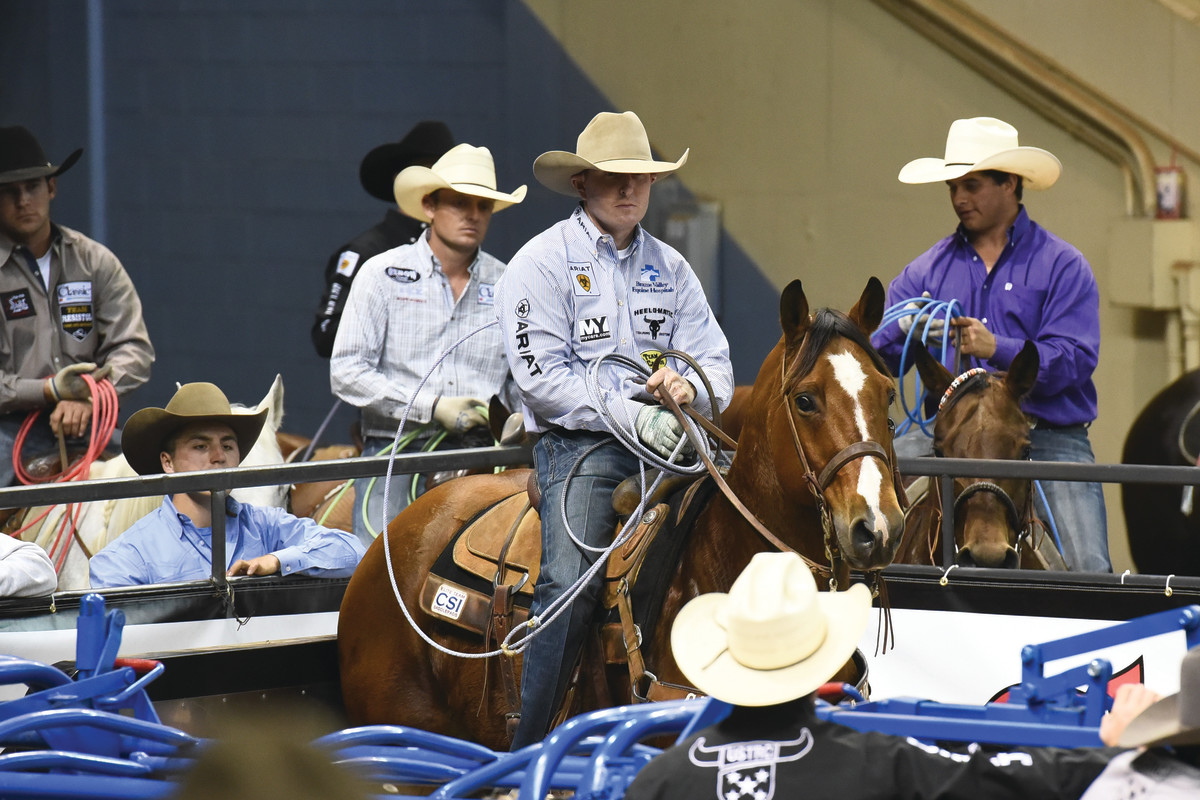
Jennings Photography
Figuring It Out
Both types of horses have their place in the jackpot and rodeo arena, and I’ve spent my career troubleshooting the score on horses from one end of the spectrum to the next. Figuring out how to best score your horse is a matter of time in the saddle and patience in the box.
Cool It
When you are running into box problems, the worst thing you can do is get mad. The energy on the inside of you is bad for them. So with all of these tips, the first thing I want to emphasize is that for me, everything works better when I’m relaxed and not mad, no matter how frustrating figuring out how to score can be.
Ride Time
In general, I think we all put too much emphasis on working and scoring our horses. I know they need scored, and I’m not againstworking on scoring in the box by any means. But I really do think we can over-do it on both seasoned and young horses.
I didn’t score many steers at all while we were in California rodeoing. We just roped fresh cattle, sorted steers, roped at the rodeos, and rode our horses. I can’t believe how good my horses were in the box. I wasn’t picking on them. They weren’t perfect in the box, but they were standing still, looking at the cow. Doing something different every day—instead of just the regular grind of the practice pen or the constant go-go-go of the rodeos—kept it fun for my horses, and they felt better as a result.
Get Moving
When I am working on scoring in the box, no matter what kind of horse I’m on, it’s my opinion that I’m better off if I don’t force them into the corner. The more I have tried to make my horses stay, the harder it is on them. The more I pull on my horses or jerk on the bridle reins, the more scared they get. The more I threaten my horses, the worse they get.
Instead, I opt to keep my horses’ feet moving if we’re running into a problem. If they’re wanting out of the box, I usually let them out. I get out of the box and move their feet and let them get themselves calm by loping circles in front of the box. I’m not talking bolting out and whipping them in circles. And I don’t agree with walking out and letting them stand, because that’s creating a monster that wants out of the box to do nothing. It’s as simple as moving his feet around, doing drills to get him listening to me, and putting him back in the box. So when you do get to a pressure situation, and your horse doesn’t want to stand still in the corner, you can move his feet in the box and he’ll remember back to when you did that at home, and how much harder work it was to not stand still.
Heel Box Help
Clint is 12 now, and he’s pretty good. But prior to him being 10 years old, I wouldn’t haul him because I could not get him to sit still for the gates. He wanted to jump and not watch the cow. But he was always good in the heel box, because he got to leave when the steer left. Clint spent a lotof time coming out of the heel box, without a lot of pressure or stress. Eventually, he figured it out that he could be as comfortable in the head box as the heel box, because he stopped worrying about me pulling on him and forcing him to stand.
Don’t Over-Score
Some people want to get into the box and score 10 in a row. Maybe some green horses need that, but if your horse is needing scored that much, he needs to work harder outside of the box. That’s when I want to lope circles and keep his feet moving.
Look for the Reward
Any horse I’m riding, whether I can hold him or not, or I have to let him turn his head, every day I’m at home, I’m looking to figure out how to reward him. Any time my horse doesn’t want to look at the cow, I tighten my bridle reins and try to gently pull him straight. I want to reward him and loosen when he looks at the cow. At the same time, though, you have horses who get anxiety because they know the second they look at the cow, something is going to happen. So I try to be sure to reward him by relaxing when he looks at the cow, but that doesn’t mean I score or go rope. I might just sit there and pet him.
Stop the Spin
Spinning out in the box can be so frustrating. I see people really want to get after one for that. But this goes back to moving their feet. If I have a horse who wants to spin out in the box, I like to go the way he wants to spin in 20 or 30 circles. Again, I do not do this mad. I stay calm and just keep his feet moving, so the next time he thinks about spinning out, he might think about how much work it was the last time he tried it.
Pattern Work
I want my horses to work the same no matter which direction I ride into the box or which way I turn. But especially on a young horse, if I do the same thing every time and turn him the same way every time, and I get to a big roping and the music is going and he’s never been there, if I ride up and do the same pattern I’ve always done, the pattern brings him more back to being used to something. If I always go in the front of the box and turn to the left just like I do at home, that’s a comfort for them. They can be comfortable with you but not comfortable with the situation.
Paying Attention
There are absolutely horses you’ve got to stay really quiet on, but sometimes, trying to stay too quiet to keep your head horse calm can backfire. An old horse, the more still and relaxed you are, sometimes as soon as the gate bangs they’re looking for something—a noise or a movement of any kind. They know it’s coming. It’s almost better to move them around a little more aggressively and as soon as you sit still right before you nod, they’re relaxing down to that. You see some guys who move and swing and jump and cowboys around, but their horses don’t run through the bit because they’re paying attention to him and what they’re doing, instead of what’s happening in the gates.
In the End
It all comes down to riding any type of horse the way he wants to be ridden. I want my horses to be comfortable, and I want them to last a long time. That means time in the saddle getting to know them and keeping my cool.
